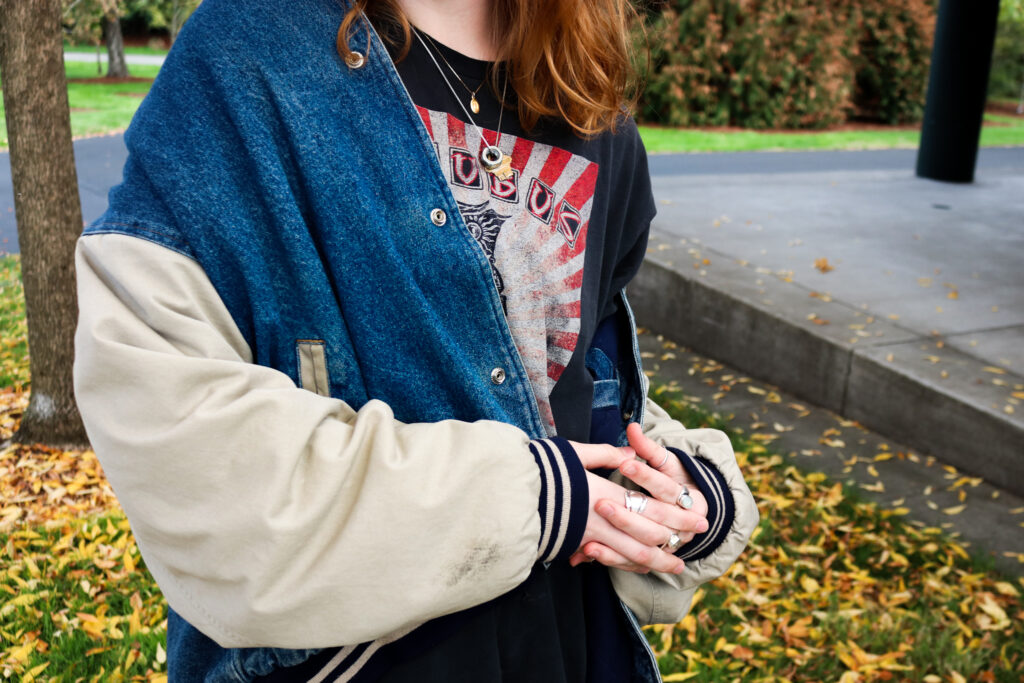The practice of fast fashion has become stitched, embedded and sewn, into popular brands to keep up with the latest trends. While the method has become a leading culprit in hazardous environmental impacts and labor exploitations, WSU Vancouver students are trying to be conscious of their personal consumer choices.
According to Good on You, a company that rates ethicality among known brands, defines fast fashion as “cheap, trendy clothing that samples ideas from the catwalk or celebrity culture and turns them into garments in high street stores at breakneck speed to meet consumer demand.”
“It’s important to know the difference between spending more money on a piece because it’s worth more or buying it because it’s branded. Because, for instance, Supreme is much more expensive, but is it made better?” – Haley Miller

When trying to find eco-friendly pieces, Haley Miller, senior, digital technology and culture major and vice president of the university’s Fashion Club, speaks on some of the best practices to reduce overconsumption. She recommends one of the best ways to limit consumption of fast fashion is by visiting local thrift stores or consignment shops around town, such as the Goodwill bins in Portland.
Nathan Zimmerman, a freshman studying entrepreneurship, and fashion enthusiast, also shares more accessible locations students can go to when finding stylish pieces, while remaining diligent in secondhand shopping.
“When starting with thrifting, there are a lot of places around [Vancouver], like Open House Ministries, where you can find some really fun pieces, also Goodwill— everyone loves Goodwill,” Zimmerman explained.
In addition to thrift shopping, Miller encourages students to avoid impulse buying and to recognize the purpose behind a purchase. She says focusing on the brand name might not always be the best choice and instead suggests investing in sustainable clothes containing high quality materials.
“It’s important to know the difference between spending more money on a piece because it’s worth more or buying it because it’s branded. Because, for instance, Supreme is much more expensive, but is it made better?” Miller said.
It is worth noting that sustainable brands do come at a high-end price. Therefore, Miller recommends checking online secondhand stores for those pieces, or searching for online resale shops growing in popularity, such as Depop, StockX and eBay. These sites can be great resources for finding those expensive statement pieces at bargain price points, as long as you stay vigilant when purchasing from reliable sellers.
At the end of the day, clothing is a necessity for all, a hobby for some and a passion for a few. Understanding the ramifications of buying fast fashion is the first step to shopping smart, and contributes to protecting the environment and mitigating damage to labor workers that are involved in the fashion industry. Next time you go shopping for new clothes, consider the impact of your purchase and ask yourself, is it sustainable?

Bethanie is a senior studying environmental and ecosystem science at WSU Vancouver.
